The Dominican Republic has a population of about 9.6 million people. Of that, 73 percent is of mixed race, 16 percent are Caucasian, and 11 percent are of African descent. Around 95 percent of the population is Catholic. There is freedom of faith in the country, which allows around 2 percent of the population to practice Voodoo.
A typical Dominican family has four people. Statistically, while 42 percent of the homes are run by both parents together, about 31 percent are run by single mothers, and the rest are run by relatives.
The Dominican Republic is divided into 31 provinces. Nine are in the southwestern region of the country: San Cristóbal, San José de Ocoa, Azua, San Juan, Elias Piña, Barahona, Baoruco, Independencia and Pedernales.
Each province depends on the central government. Each, however, also has its own local authorities: governor, senators, deputies, mayor, etc.
The southwestern region of the Dominican Republic is a strategic and convenient location for its residents. To the west is the border with Haiti, and to the south is the Caribbean Sea. It is among the regions that produce the largest amount of seafood in the country, and it also enjoys trading activities with Haiti.
The southwest is the main producer of grains and other major crops among the three largest regions of the Dominican Republic. Beans, rice, corn, pigeon’s peas, peanuts, coffee, cacao, plantains, bananas and avocados are among the most important crops.
Usually, bigger farms hire workers for a monthly pay of around $83, or for around $5.50 for a single day of work. Because this pay is not enough to provide for their families, the workers will usually also produce their own plantains and bananas in small plots of land near their homes to enhance their income. It is quite common in rural areas to see women walking in the streets with a basket on their head selling goods. Sometimes they sell coconuts and cassava, too.
Also, sugarcane is largely produced in the southwest, and the industry is a main employer in the region, specifically in the province of Barahona. Hundreds of men work during the day and others during the night maintaining the railway, on the wagons, and in the fields. They prepare the land with compost, water the fields, fumigate and burn the fields for cutting and collecting sugarcane, and finally weigh the sugarcane and load it on the wagons.
In the rural southwest, unemployment is high, and those who claim to be employed have jobs for only the six months of sugarcane production. Those working on farms will remain employed during the harvest season as long as the weather allows.
Commonly, women stay at home looking after the children while they also sell some goods around their homes.
When the agriculture season is over, many families will starve . Their situation becomes more extreme. For this reason the government has created and granted a debit “Solidarity” card to more than 800,000 families across the country so they can get food for themselves and their children by using money allocated by the government every month.
Because the parents can scarcely provide for their families, teenagers quite often quit school so they can work, too. This is the case at Batey 6 in Barahona, where many children quit school so they can help take care of cows and goats, and collect onions, tomatoes, green peppers and other crops.
Sometimes the mother needs to go out and work, and she leaves the oldest child in charge of looking after the younger children.
For people living in the rural southwest, life is a constant challenge. The rainy season starts in May and ends in November, which would be good for agriculture. However, this is the same period when storms and hurricanes hit the island. And the southwest becomes vulnerable when the rivers burst their banks and the communities are flooded.
Sometimes it doesn’t rain when the farmers expect it. In times like this, the Southern Yaque River, with its many brooks, becomes the main water source in the region, irrigating the land via canals and pumps. But the fields far from the irrigation aids dry up, the crops fade, the animals become skinny, and sometimes they even get sick and die.
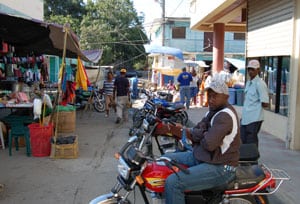 Life in the urban parts of the southwest is very similar to that in the cities of the northwest. A typical job is that of motorcycle-taxi driver, and it’s quite common to see children in the streets begging, shining shoes, selling pirated DVDs and CDs, scavenging in the dump, drug trafficking, etc.
Life in the urban parts of the southwest is very similar to that in the cities of the northwest. A typical job is that of motorcycle-taxi driver, and it’s quite common to see children in the streets begging, shining shoes, selling pirated DVDs and CDs, scavenging in the dump, drug trafficking, etc.
The southwestern border towns of Pedernales, Jimaní and Elias Piña open their gates twice a week so that Haitians and Dominicans can exchange goods. While the Dominicans buy clothes, shoes, perfume and other items for personal use and to resell, the Haitians buy food to take to their country.
In every one of these marketplaces, Dominicans and Haitians conduct business in such harmony that it’s easy to forget the bloodstained history between the two countries.
San Cristóbal is the only southwestern province in which free-zone industries represent the main economic factor. However, lack of environmental controls has made Haina, a municipality in San Cristóbal, one of most polluted towns in the world.
Examples of child development centers located in areas like this include:
DR-135, 150, 201, 247, 240, 248, 291, 305, 314, 322, 351, 352, 354, 356, 357, 365, 367, 387, 405, 409, 413, 455, 460, 467, 485, 495, 524, 526, 529, 534, 560-563, 580, 721, 800, 801, 910 and 920.
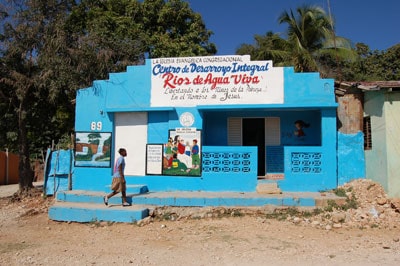
DR-801, Student Center Rios de Agua Vida
Biajacas Recipe
A typical dish in the southwest is biajacas. Biajacas are fish from Lago Enriquillo (Henry Lake) and in Laguna de Cabral (Cabral Lake). Biajacas can be biajacas fritas (fried biajacas) or biajacas con coco (biajacas in coconut milk).
Ingredients for Biajacas Fritas: four regular-size biajacas, two sliced lemons, four cups of frying oil, one cup of wheat flour (if frying the fish in one whole piece), pepper, oregano, salt to taste and one teaspoon of crushed garlic.
Ingredients for Biajacas con Coco: four regular-size biajacas, two sliced lemons, four tablespoons of frying oil, pepper, oregano, salt to taste, two green peppers cut in strips, one onion cut into strips, four large tomatoes, one teaspoon of crushed garlic and four cups of freshly extracted coconut milk and two spoonfuls of cut cilantro.
Clean the fish, remove the fins and open diagonal cuts on the fish one inch from one another.
Mix the salt, pepper, oregano and garlic and then spread the mixture all over the fish even inside the cuts.
If making biajacas fritas, Dip the fish into the wheat flour and shake to get rid of the excess.
Heat the oil in a frying pan big enough for four fish. Place the fish inside the pan and leave there until the fish darkens a bit. Flip the fish so both sides cook; this may take around 10 minutes.
Serve hot with one or two of the following dishes as desired: rice, beans, mashed potatoes, plantains, green bananas. Place the lemon slices on the plate to one side to then be crushed upon the fish as desired.
If making biajacas con coco, Heat the oil in a frying pan big enough for four fish. Place the fish inside the pan and leave there until the fish darkens a bit. Flip the fish so both sides cook; this may take around 10 minutes.
Remove the fish from the pan. In the frying pan where the fish was, add the onion, green pepper and tomatoes. Sauté for two or three minutes. Add the coconut milk.
When the sauce starts to boil, simmer over medium heat, then return the fish to the pan. Taste the sauce and, if necessary, adjust the salt to taste.
Cook fish for another three minutes.
Serve hot on plates. Add the cilantro to the fish and serve with some of the following dishes as desired: rice, tostones (fried plantains), avocado, or mashed potatoes. Place the lemon slices on the plate to one side to then be crushed upon the fish as desired.

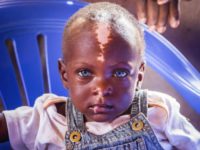
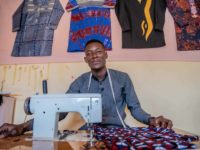

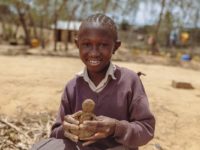


3 Comments |Add a comment
thank you so much for this post! our sponsored child lives in this region, so this was very informative.
I lived in San Juan & Las Matas with my missionary family during my childhood years. Towns of Azua, Elias Pina, etc were familiar locations for ministry. The food is incredible, the poverty heartbreaking, but the hearts of the people are warm and loving!. And not much had changed in 20 yrs when I returned in 1996. However, the Lord is working through His people and His body, both in churches & thru Compassion – it’s exciting to see what He is doing in the hearts & lives of His called ones in the DR. We sponsor a child, but in the northern region.
I sponsor a child in the city of San Juan (DR-365). My child’s life must be very difficult, especially living in a single-parent household.